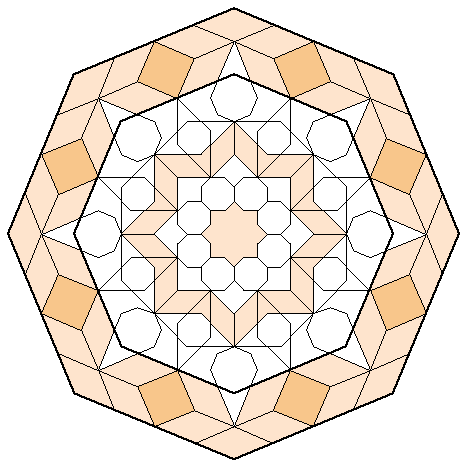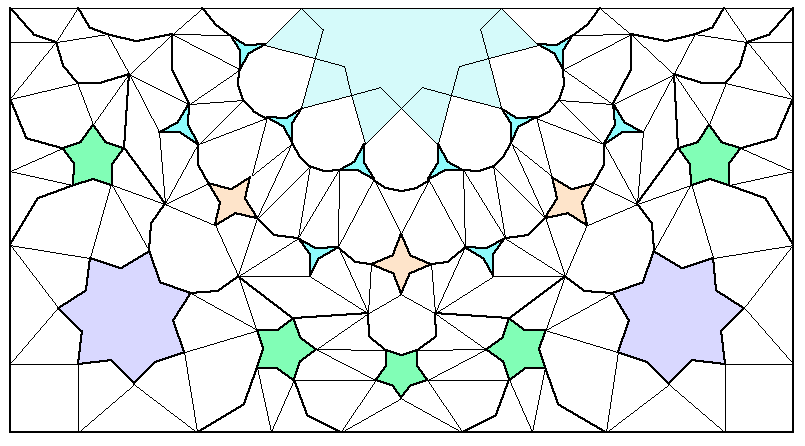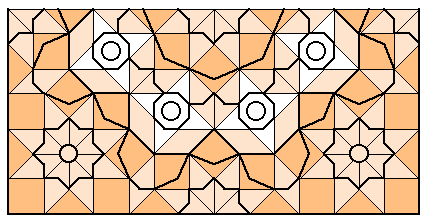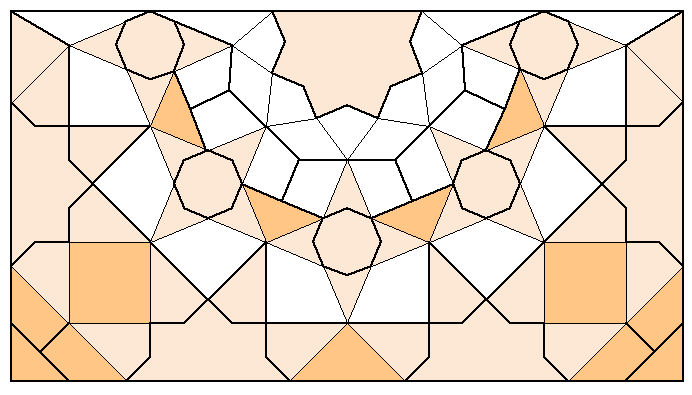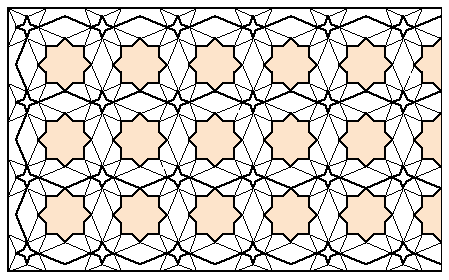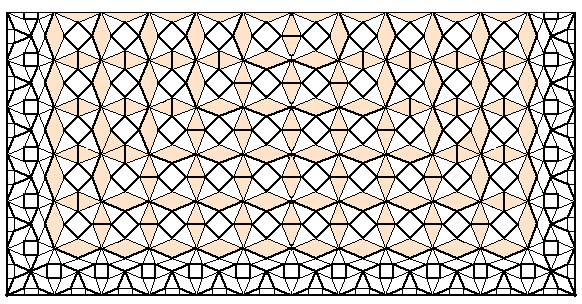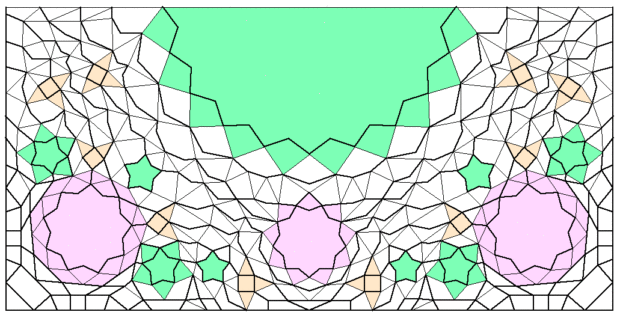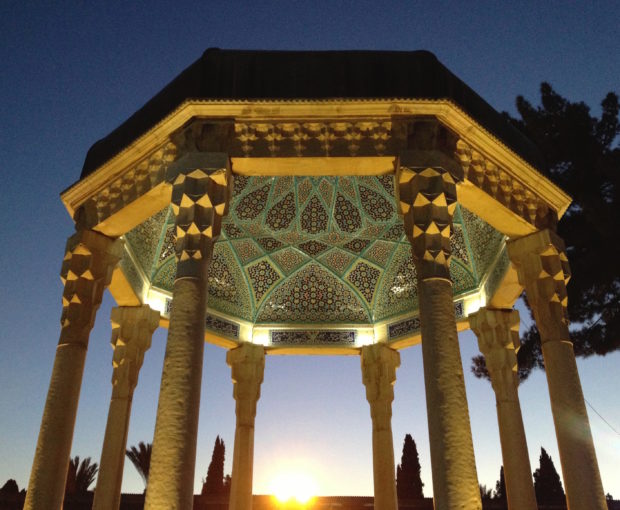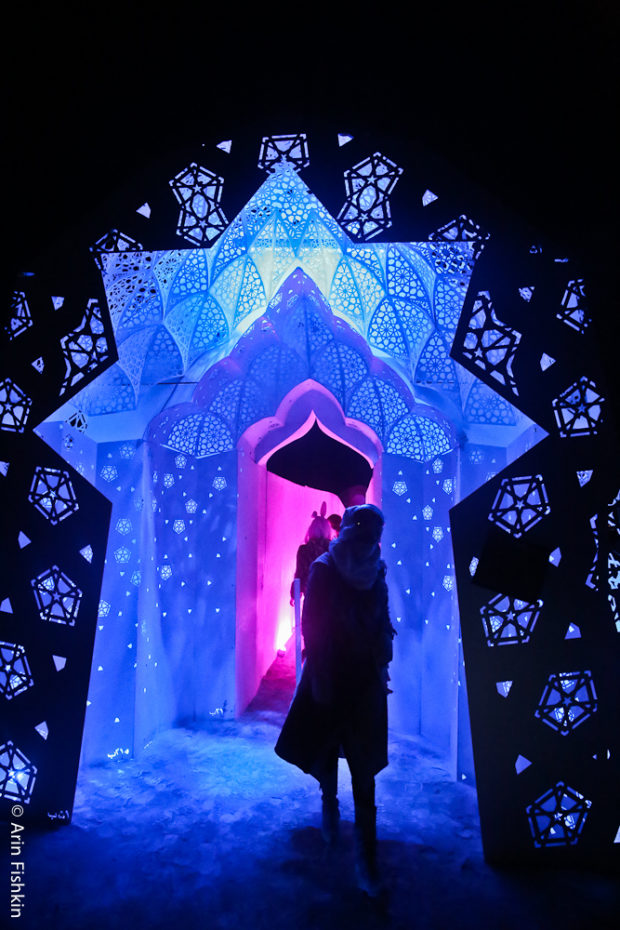
What is muqarnas and why is it so magical? Muqarnas is a style of architectural ornamentation that dates back to the middle of the 10th century, originating in Iran and North Africa. In essence, muqarnas compositions are 3D manifestations of 2D Islamic geometric designs, meaning these insanely complex designs were made using nothing more than a humble compass and ruler.
Used primarily to form smooth visual transitions between straight walls and domed rooms, muqarnas compositions serve cosmetic, not structural, purposes, and can be found in domes, half-domes, cupolas, niches, arches, and squinches (where the upper corners of a square room are filled in so the ceiling appears domed).
One of the earliest records of the 2D pattern drawings for muqarnas compositions is the Topkapi Scroll, dating back to the late 15th/early 16th century in Iran.
In this picture, you can see the wood scaffolding and cement used to piece one style of muqarnas together:
And what the finished product would look like:
Each muqarnas composition has five common qualities:
1. Three-dimensional shape that can readily be flattened into a two-dimensional geometric outline (and begins as such)
2. Depth of design is variable and determined entirely by the maker
3. Simultaneously architectural and ornamental by nature
4. No intrinsic logical or mathematical boundaries, so can be scaled ad infinitum
5. Consists of stacked tiers made up of cells, each of which has a facet and a roof of sorts
How They’re Made
In our world of digital manufacturing, it’s hard to imagine these intricate, perfect geometries were made by hand, one unit at a time, hundreds of years ago. UK-based author, educator, and artist Eric Broug is a renowned scholar on Islamic geometrics who has made it his mission to spread the knowledge and joy of muqarnas through his workshops, lectures, books, and tutorials, all housed under the School of Islamic Geometric Design. Be sure to check out the Resources page, which features tutorials as well as a teacher guide. Broug has also created a fascinating TED-Ed video on the complex geometry of Islamic design that’s definitely worth a watch.
His “Practical Introduction to Muqarnas” gives a great, illustrative overview:
He teaches how to make a couple of neat three-tier designs out of mounting board:
To make the process more real-world, check out this prime example of the North African-style of muqarnas found in the Alhambra in Spain:
At first glance, it’s hard to imagine where one even begins to build a muqarnas composition like this. Here to make it tangible is Moroccan muqarnas master Abdelghani Nhari, whose work Broug features on his site.
It’s all about carefully arranging the pieces of the composition. Watch three minutes of Nhari assembling a muqarnas composition and realize how incredibly painstaking the process would be for a large-scale area:
Not to mention that Nhari first hand-carves each of the pieces, as artisans have done for centuries:
The 2D Behind the 3D
Japanese art scholar Shiro Takahashi has painstakingly catalogued structures across the globe bearing notable muqarnas compositions, mapped by location, and has created readily available simple line drawings for 1061 of the entries.
For example, here’s the iwan (the large, arched entrance) of the Jameh Mosque in Yazd, Iran:
And Takahashi’s line drawing:
And a closeup of the iwan ceiling:
Infinite Material Possibilities
The beauty of such intricate designs based on classic geometries is that they’re infinitely scalable in a vast array of materials. No picture can capture how amazing it is to physically be standing under a giant muqarnas composition. I had the pleasure of taking most of the pictures in this section myself thanks to trips visiting family in Iran. Each material inspires a different effect. The most surreal, perhaps, are the mirror-encrusted muqarnas, most often found in mosques and shrines. Even though you’re surrounded by mirrors, the angles and small size of the individual pieces make it so you never see a reflection, only brightness and light.
Plaster
Fatimah Masumeh Shrine in Qom:
Water Museum in Yazd:
Hand-painted, in one of the luxury suites at the Abbasi Hotel in Isfahan:
Tile
The Shah Mosque in Isfahan:
Be sure to take a look at Nevit Dilman’s super-high-resolution image on Wikipedia, where you can really zoom in and see all the glorious details.
The Jameh Mosque in Yazd:
Poet Hafiz’s Shrine in Shiraz:
Brick
Jameh Mosque in Yazd:
Mirrored
Fatimah Masoumeh Shrine in Qom:
Chehel Sotun Palace in Isfahan:
Shah-e Cheragh Shrine in Shiraz:
Wood
The Music Room of the Ali Qapu Palace in Isfahan (photographed by Mohammad Reza Domiri Ganji):
I found this great assembly shot of wooden muqarnas from a Muqarnas Pavilion made by Hamburg-based artist and craftsman Joachim Tantau.
Gold
Fatimah Masumeh Shrine in Qom:
Modern Rendition: Gadeken’s Roshanai
Great things happen when makers incorporate ancient designs into modern works. Bay Area artist Charles Gadeken recently incorporated metal muqarnas compositions in the entryways of his latest large-scale piece, entitled Roshanai (meaning illuminate), a 108-ft long tunnel of light and sound.
Here’s the 3D rendering of the entryway:
The flattened geometry:
A section of the metal muqarnas:
And the finished product at night:
We’ll wrap up with one more muqarnas just for the sake of eye candy. I’d love to see the Alhambra, particularly the muqarnas in the Hall of the Two Sisters. Wow!
ADVERTISEMENT

















